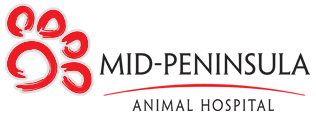You'd expect us, in the heart of the Silicon Valley, to have the latest technologies. You'd also expect we don't jump on every new idea until it's been reasonably vetted (pardon the pun) by the medical scientific community. Sometimes animal research precedes human research; sometimes it's the other way around, as is the case with laser therapy.
It's only been recently that so many anecdotal veterinary reports started circulating on top of the many laser therapy studies on people -- on everything about inflammation and from treating carpel tunnel to low back pain to arthritic knees -- that we considered it. The research that most interests us, as vets, involves arthritis pain and hip dysplasia. We're also interested in healing wounds and injuries, and treating infections. We don't get a lot of carpel tunnel here. ;^)
As we received good reports from Dr. Lowery's experiences with the laser at Scout's House, and watched anecdotal reports mounting in the veterinary world, at a certain point we wanted to see for ourselves first hand. So, we brought in a K-laser Class IV laser unit in for a 30-day trial. We observed that it appeared to reduce inflammation and to accelerate the healing of chronic wounds.
The process, called photobiomodulation (read therapeutic laser application), modifies the oxidation/reduction status of mitochondria in the cells of the body. Remember your high school biology? Mitochondria are the powerhouses of cells. Stimulating the mitochondria appears to result in multiple types of activities which loosely translate to more energy for the cells to use intra- and inter-cellularly in repair and recovery from injury.
When used properly, laser therapy is free of side-effects and non-addictive (important for pain). It is not absolutely risk free however. Our licensed staff underwent the training needed to be confident using the K-laser safely.
So, it's official: We've recently acquired a Class IV laser therapy capability. We have the equipment; we've been properly trained on it. It's another option to offer as an adjunct to standard therapies, say after surgery, after injury, or for a wound, an infection or for inflammation. If this sounds like something you'd like to consider further, just let us know.


